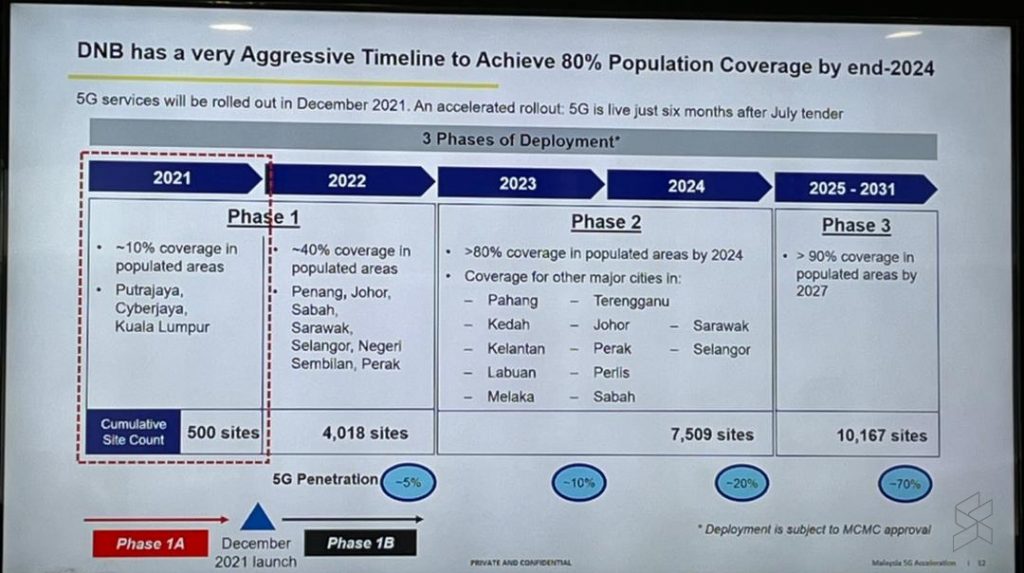Singapore’s largest telco, Singtel, has achieved a major milestone of achieving over 95% standalone 5G nationwide coverage in less than two years after turning on its 5G network in September 2020. The telco also claims to make Singapore the first country in the world to be fully covered by standalone 5G.
According to their official announcement, Singtel’s 5G Standalone (SA) network currently covers more than 1,300 outdoor locations and over 400 in-building, as well as underground, which will create immense opportunities for the development of groundbreaking applications and immersive experiences for both enterprises and consumers.
Back in June 2020, Singapore’s IMDA awarded Singtel and StarHub-M1 joint venture 100MHz blocks of the 3.5GHz spectrum while Singtel, StarHub-M1 and TPG were given 800MHz lots of the mmWave (26GHz and 28GHz) spectrum. StarHub switched on its 5G service in August while Singtel’s 5G network went live in September 2020. To enhance coverage and capacity for 5G, Singtel and M1-StarHub were awarded 25MHz blocks of the 2100MHz spectrum, while TPG was awarded 10MHz block of the same spectrum in November 2021.
While it isn’t surprising that Singapore can achieve mass 5G coverage quickly due to its small geographical size, Singtel has achieved its milestone three years ahead of target. During the award of the 5G spectrum in 2020, the regulator has set a target to achieve 50% 5G coverage by the end of 2022 and full coverage by the end of 2025.

Singtel has picked Ericsson for its 5G technology partner and they launched the 5G SA network in May 2021. 5G SA is often considered as the true 5G network as it doesn’t rely on 4G as anchor. The SA architecture provides greater bandwidth and lower latency compared to 5G Non-Standalone (NSA) networks.
Commenting on the latest milestone, Singtel’s Group Chief Executive Officer Yuen Kuan Moon said “We’re extremely excited about this important milestone for both Singtel and Singapore as nationwide standalone 5G coverage is a major leap in technology that will spur unprecedented digitalisation. Despite disruptions from COVID and the knock-on impact on manpower and resources, our planners and engineers managed to accelerate our 5G deployment, working through the pandemic to lay the groundwork and build a whole new infrastructure for a secure and resilient 5G network. This means that Singapore can now exploit the full capabilities and best applications that 5G can offer, paving the way for innovation and new growth that will propel our country forward.”
After a two year hiatus due to the pandemic, Singapore will be celebrating its 57th National Day Parade this year and this will be the first to be fully streamed on 5G to mark its nationwide rollout. Live stream for previous National Day Parades were using fixed fibre broadband which is said to be a hassle to set up. Singtel said the event will test the power and reliability of its network especially its capability to support ultra HD content while enabling customers to enjoy high speed connectivity for seamless streaming or uploading of high-resolution content during the Parade.
According to Straits Times, 480,000 out of 2.84 million Singtel postpaid customers are on 5G, while StarHub has 400,000 customers on 5G out of 1.5 million postpaid subscribers as of March 2022.
Malaysia continues to lag behind in the 5G race
Meanwhile, Malaysia’s mass 5G adoption is still up in the air with YTL Communications’ Yes 5G remains the only telco to offer commercial 5G services. Despite reports that all telcos are onboard with Digital Nasional Berhad’s 5G Single Wholesale Network, none of the major telcos such as Celcom, Digi, Maxis and U Mobile have actually signed the Reference Access Offer. According to sources close to the matter, they merely submitted the Access Request Application Form as well as a non-binding term sheet for the equity deal.

According to DNB’s 5G coverage roadmap, it aims to achieve 40% population coverage by the end of 2022 with 4,018 sites and 80% coverage by the end of 2024 with 7,509 sites. At the moment, DNB’s 5G network currently mostly covers select areas of Kuala Lumpur, Putrajaya and Cyberjaya, and they have started its rollout into Johor and Penang. Communications and Multimedia Minister Tan Sri Annuar Musa said last year that Malaysia aims to be #2 in the 5G race in ASEAN and it needs to speed up its 5G development.
[ SOURCE, IMAGE SOURCE ]
Related reading
- Annuar Musa: Sale of DNB’s 70% equity stake to six telcos to be finalised by 8th July
- Annuar Musa expects telcos to conduct due diligence for DNB equity deal in two months, 5G services available by September
- Annuar Musa: 1,000 schools including rural areas in Malaysia will get 5G by end of 2022
- Five reasons why Celcom, Digi, Maxis and U Mobile are reluctant to accept DNB’s 5G access offer








